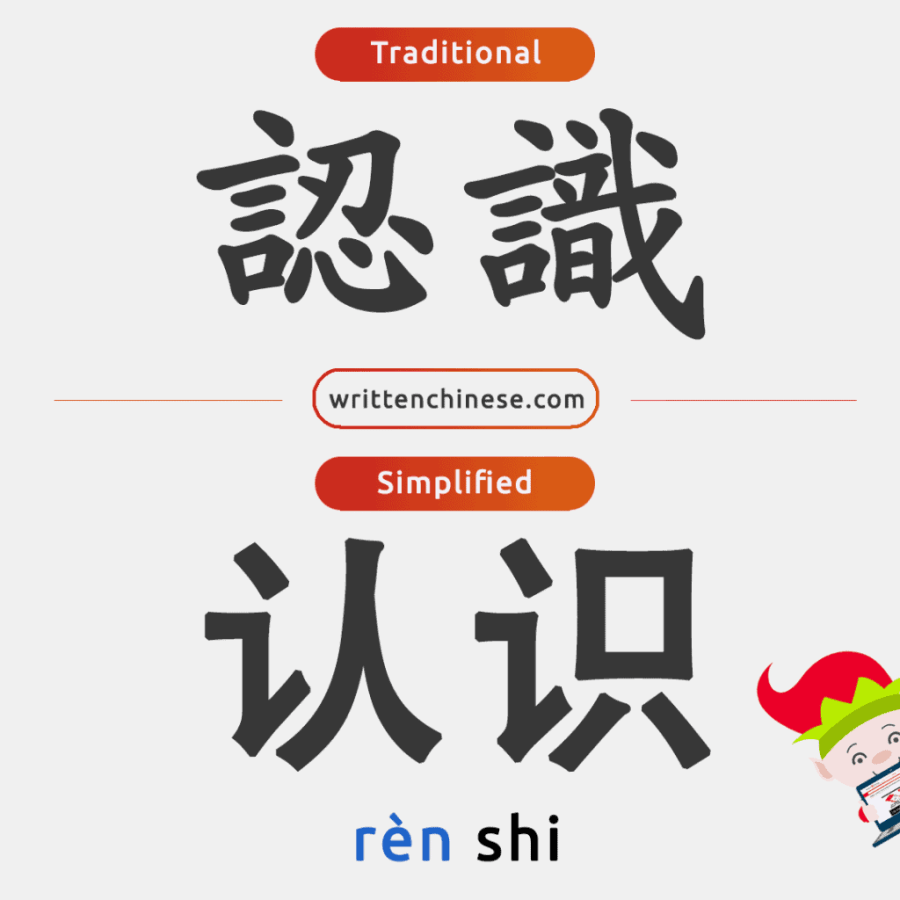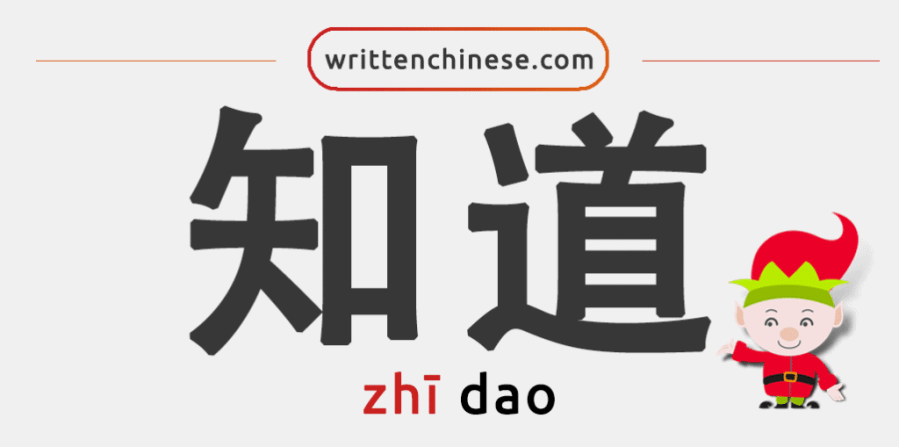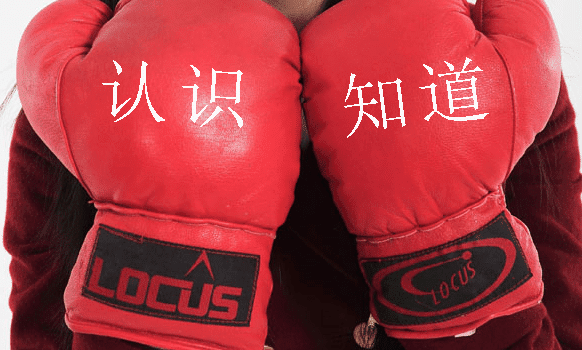This is the second article in our series of blog posts focusing on specific characters or grammar patterns that can often confuse learners of Chinese. This post focuses on the two bigrams, 认识 (rèn shi) and 知道 (zhī dao).
First, let’s take a look at the dictionary definitions of 认识 (rèn shi) and 知道 (zhī dao):
认识 (rèn shi): to know / to recognize / to be familiar with / to get acquainted with sb / knowledge / understanding / awareness / cognition
知道 (zhī dao): know / be aware of
认识 (rèn shi) is most commonly used to imply familiarity with another person, place or object through a previous experience.
知道 (zhī dao) suggests knowledge of a person, place or object, but has never been introduced to the person or been to the place physically.
One way to remember how to use these bigrams is to look more closely at the characters. Let’s begin with 认识 (rèn shi).
认识/認識 (rèn shi)

认 (rèn) – to recognize / to know / to admit
To understand the original meaning of the character 认 (rèn) we look at the traditional character: 認 (rèn). The character’s meaning was ‘to accept something reluctantly’.
The simplified character looks very different, but I remember this character by taking the radical 讠(yán), the speech radical and the 人 (rén), the person radical and imagining that on seeing the ‘man’, I admit that I know him.
识 (shí/shi) – to know / knowledge
識 (shí) is the traditional character of 识 (shí) and once referred to identifying the origin of weapons.
识 (shí) now combines the same 讠 (yán) radical as in 认 (rèn), together with 只 (zhǐ) (made up of 口 and 八 radicals) meaning ‘only’.
知道 (zhī dao)

知道 (zhī dao) can also be explained by breaking down the characters.
知 (zhī) – to know
The radicals of the character are 矢 (shǐ) meaning arrow and 口 (kǒu) meaning mouth. In ancient China, this character was used to describe men gathering to have a ‘discussion about hunting’.
To remember this character, I take a more figurative approach than this traditional translation. If you are able to speak (口) quickly (矢) about it, you must ‘know’ about the subject.
道 (dào) – direction / way / road / path
道 (dào) shows a pictograph of a head which has often been used to mean chief. Originally, the meaning of this character meant ‘to guide’. 首 (shǒu) combined with 辶 (chuò) meaning to walk, suggests that the ‘guide’ will show you the right direction.
Combining these two characters suggests that you ‘know’ the right path but have yet to travel it.
Now, let’s look at 2 example sentences using 认识 (rèn shi) and 知道 (zhī dao):

(1) 我认识他。(wǒ rèn shi tā)= I know him.

(2) 我知道他。(wǒ zhī dao tā)= I heard about him. (or I know of him)
When the object is a person, the use of 认识 (rèn shi) implies that people know each other, and have met each other before.
However, using 知道 (zhī dao) in this case suggests that he is known by reputation, ‘he’ could be famous, or you have heard of him before, and so you ‘know’ that this person exists.
Now, let’s look at using 认识 (rèn shi) and 知道 (zhī dao) when the object is a place:

(3) 我认识这个地方,我以前来过。(wǒ rèn shi zhè ge dì fang, wǒ yǐ qián lái guò.)= I know the place, I have been there before.

(4) 我知道这个地方,我朋友给我推荐过。(wǒ zhī dao zhè ge dì fang, wǒ péng you gěi wǒ tuī jiàn guò.) = I know of the place, my friend recommended it to me before.
Similarly to when the object is a person, 认识 (rèn shi) means that ‘I’ have been there before and have a previous memory of it.
知道 (zhī dao) implies that ‘I’ know of that place because I have heard about it, but have never visited and have no empirical proof that it exists.
Finally, lets see how we use these bigrams when the object is a fact:

(5) 他终于认识到自己所面临的危险是什么。(tā zhōng yú rèn shi dào zì jǐ suǒ miàn lín de wēi xiǎn shì shén me.) = He eventually realized the dangers he faced.*
When the object is fact, 到 (dào) is always used after 认识 (rèn shi). This means that the person came to realize or became aware of something.
*知道 (zhī dao) can also be used here, but the meaning is a little different.
To summarize:
认识 (rèn shi) is used when a subject has knowledge of someone or something based on empirical evidence.
知道 (zhī dao) is used when the subject knows ‘of’ somebody or something, but has never met the person or seen the place physically.
If you have a question about confusing characters or grammar, leave us a comment below!
